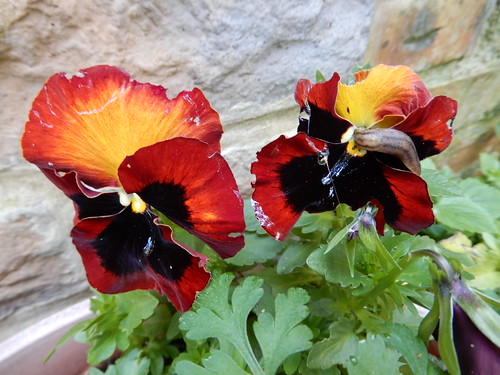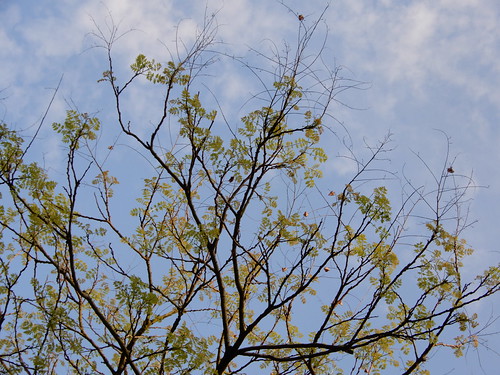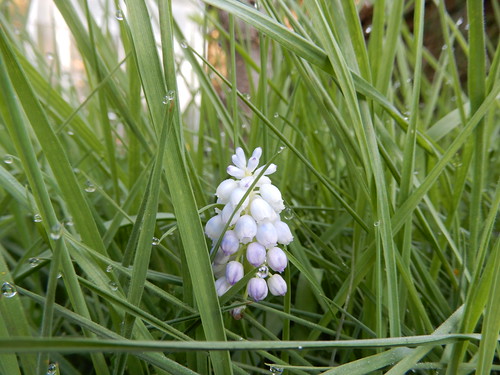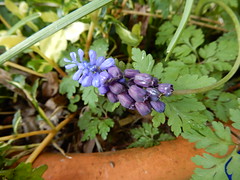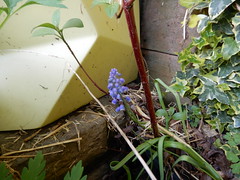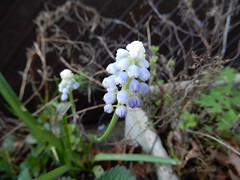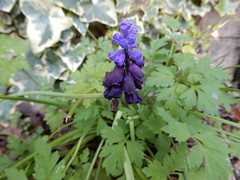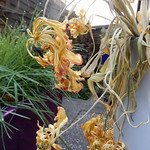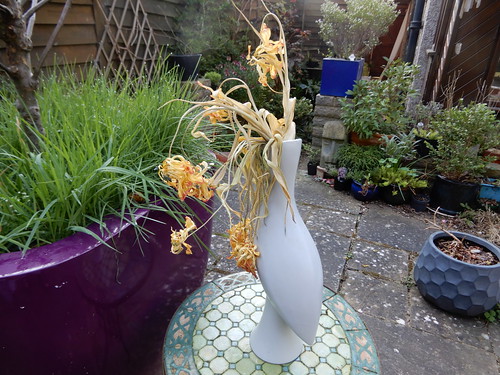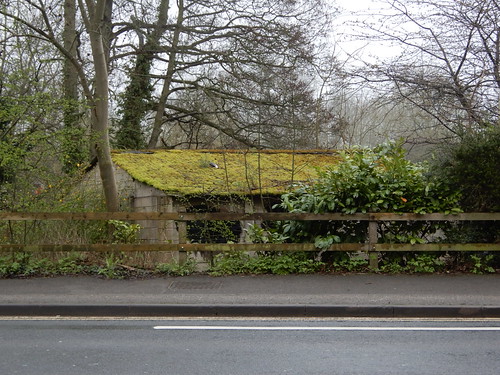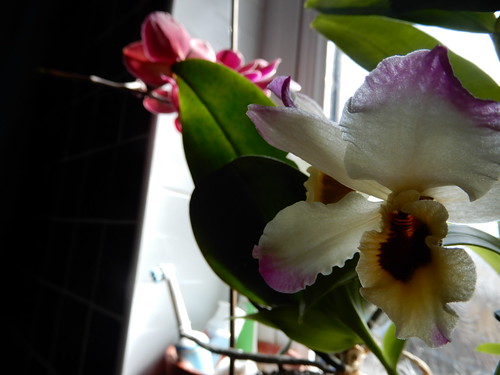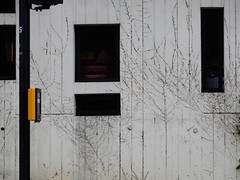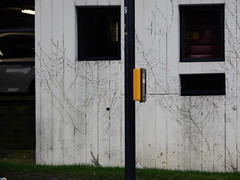Turn your back for a moment at this time of year and this happens:
This one stopped me in my commute. I stood in the road to take it. No-one ran me over. It's spring in full flow and everything is invincible.
Stopped at the lights on the bypass, the verges were awash with wildflowers. Ox-eye Daisies dominate but the scatters of Stitchwort and sparkles of buttercups mingle in. I saw Orchids on the ring road verges this spring; Early Purples, while I was stopped in a traffic queue.
Yesterday I was going "really!?" at Google maps as it lead me along an unmetalled road and a couple of industrial lots into the back entrance of Banbury Station (there were a couple of signs too, but it was definitely a shortcut that required three minutes of faith). Then this, growing on an abandoned parking attendant's sentrybox stopped me dead. This smear of alert yellow against the battered blue box (and we have lots of these leggy yellow wildflowers so I don't know which it is) had shot up from the tiniest smear of carpark dirt, in the frantic spring incubator.
This one stopped me in my commute. I stood in the road to take it. No-one ran me over. It's spring in full flow and everything is invincible.
Stopped at the lights on the bypass, the verges were awash with wildflowers. Ox-eye Daisies dominate but the scatters of Stitchwort and sparkles of buttercups mingle in. I saw Orchids on the ring road verges this spring; Early Purples, while I was stopped in a traffic queue.
Yesterday I was going "really!?" at Google maps as it lead me along an unmetalled road and a couple of industrial lots into the back entrance of Banbury Station (there were a couple of signs too, but it was definitely a shortcut that required three minutes of faith). Then this, growing on an abandoned parking attendant's sentrybox stopped me dead. This smear of alert yellow against the battered blue box (and we have lots of these leggy yellow wildflowers so I don't know which it is) had shot up from the tiniest smear of carpark dirt, in the frantic spring incubator.



